

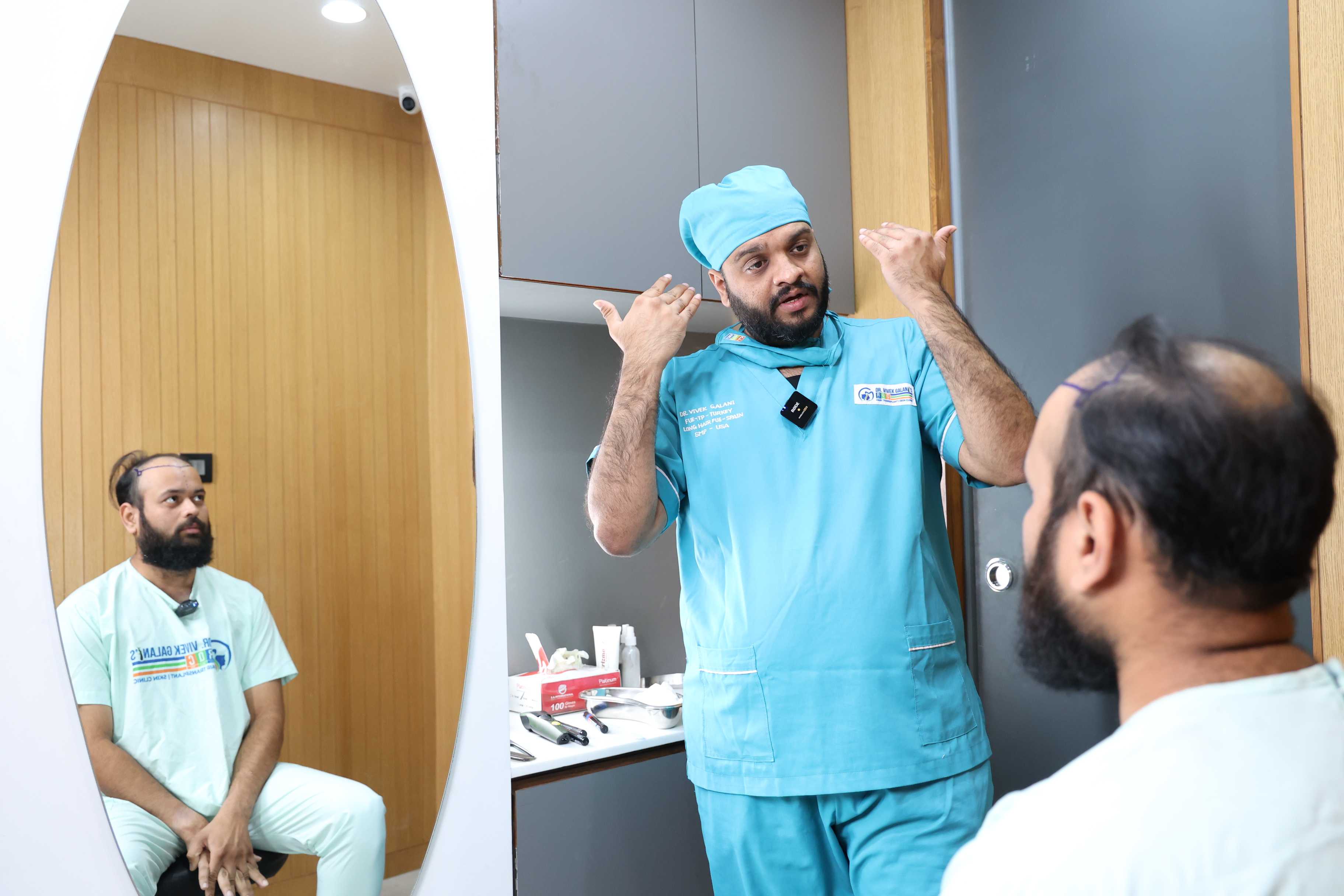
Preparing for a hair transplant involves several important steps to ensure a successful procedure. Here’s a comprehensive guide for patients on what to do the day before surgery.
We are committed to ensuring your hair transplant experience is smooth and successful. Below is an overview of the key guidelines to follow on the day of your procedure. Prior to your appointment, our team will provide more personalized instructions tailored to your specific needs.
Before the hair transplant procedure (and during the consult stages of the arrangement), please let us know about any medical issues and medications you use.
Smoking decreases blood flow to the scalp by constricting blood vessels and limiting important nutritional delivery to the follicles. For this reason, smoking should also be avoided the day before the procedure. You should further avoid smoking during the first week of your hair transplant surgery because this is when it is imperative for your newly implanted hair follicles to receive adequate nutrition.
On that note, it is also good to quit smoking permanently in order to improve the health and density of your hair.
Following these guidelines will help ensure the best possible results and make it easier for the doctor and team to perform the transplant effectively
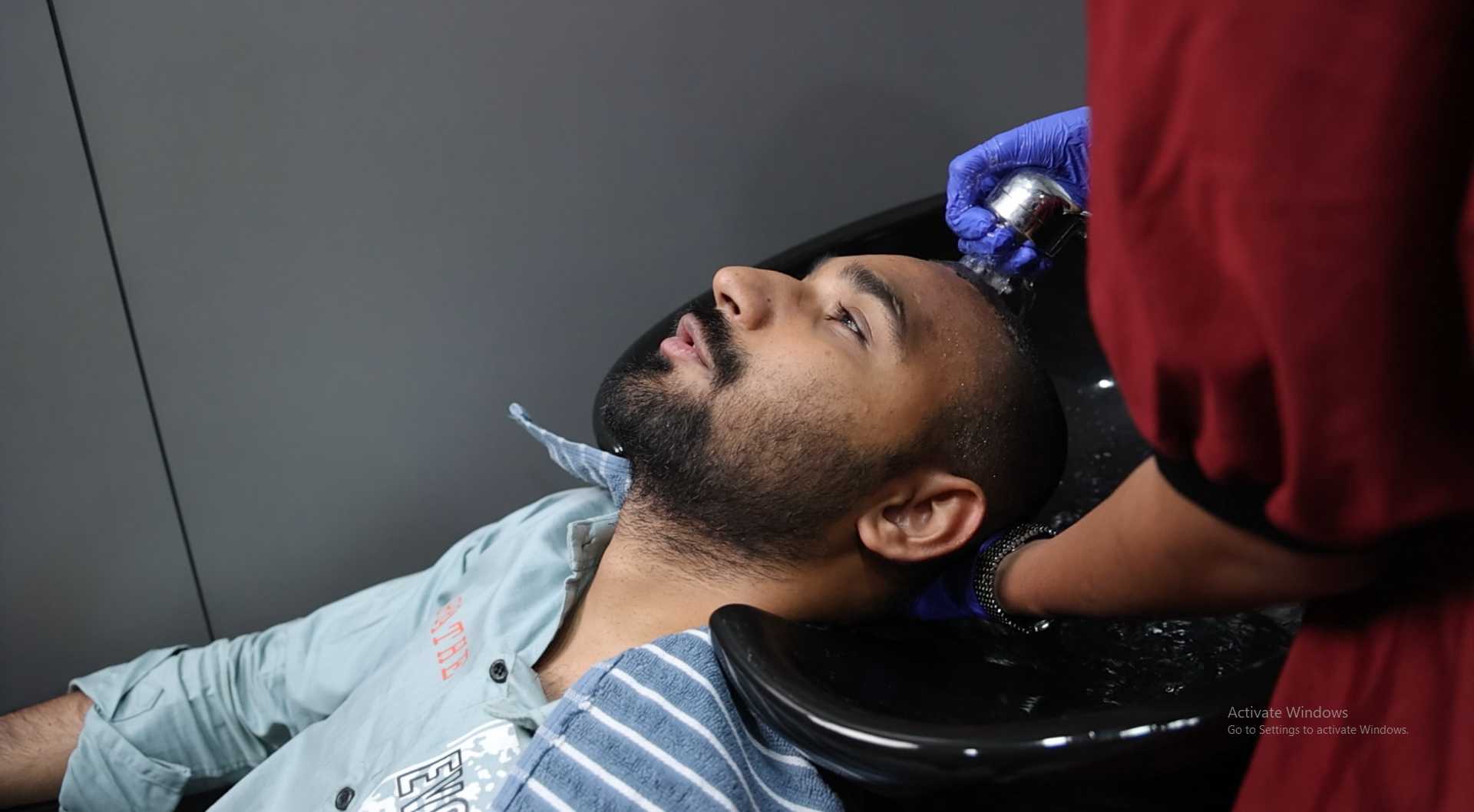
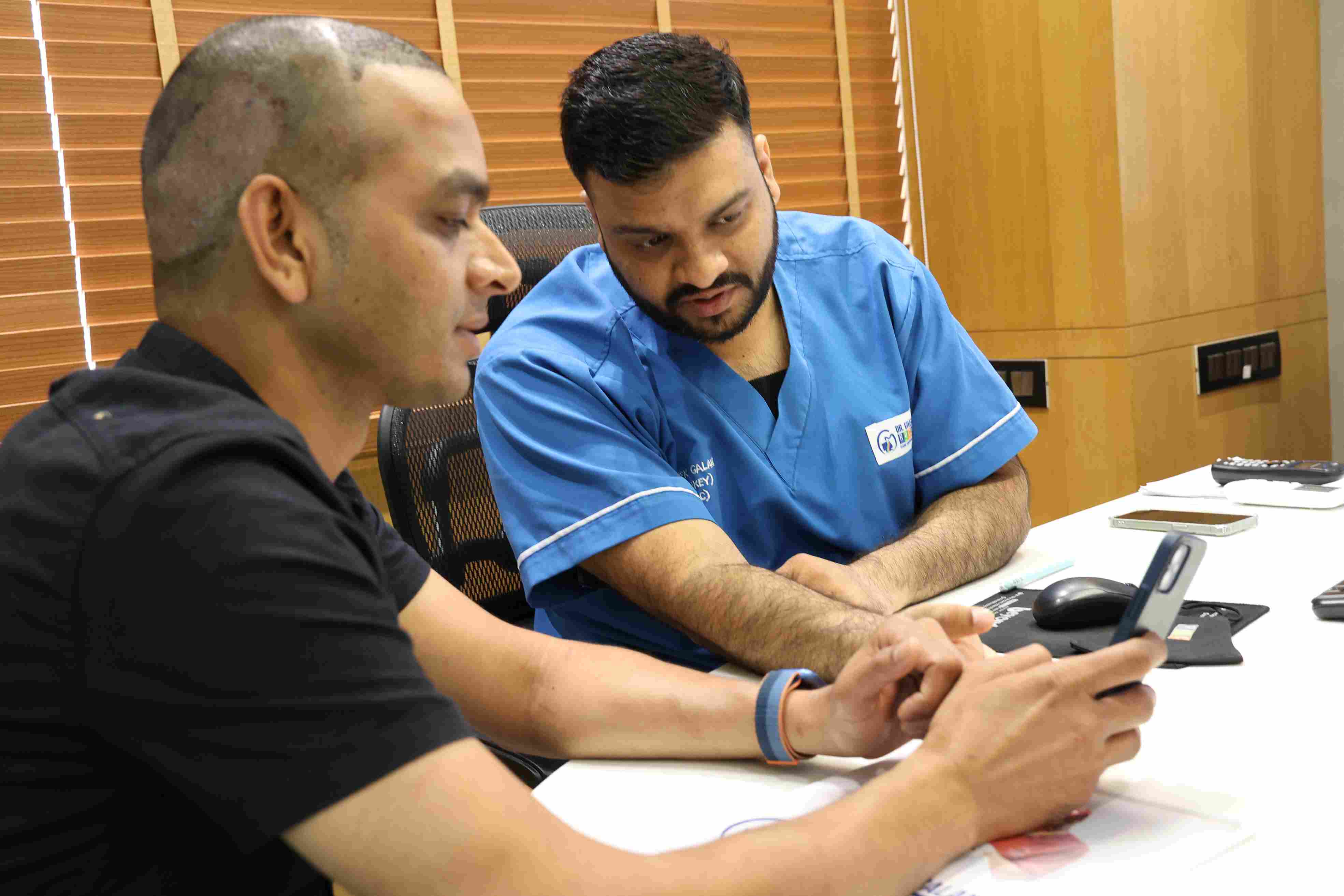
If living in a hot climate, it’s recommended to stay indoors as much as possible for 2-3 weeks post transplant.
For the first week after your hair transplant, it is essential to sleep on your back. (face up ). Do not sleep on your sides or stomach during this initial period, as these positions can put pressure on the transplanted areas and potentially damage the grafts.
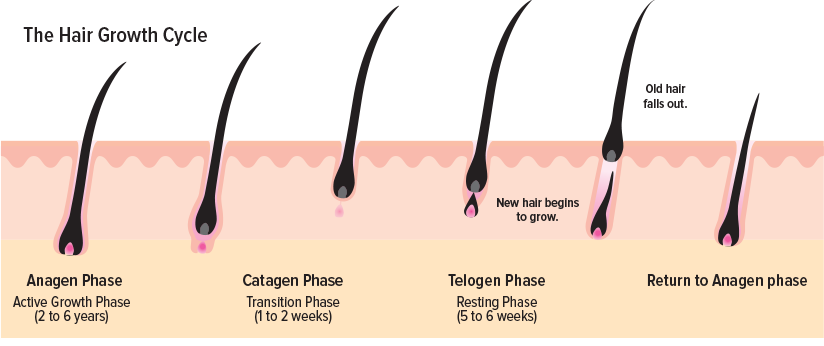
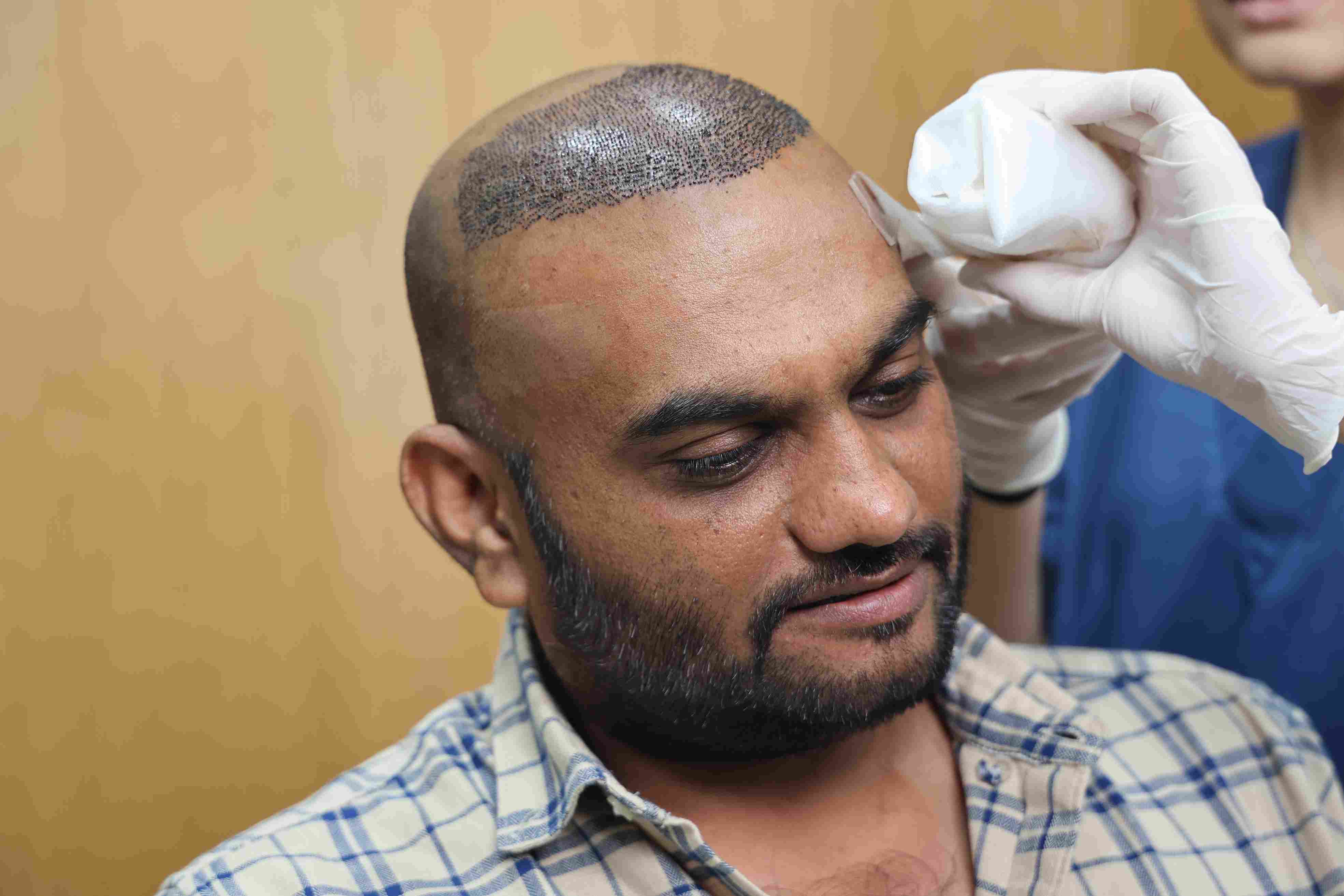
After a hair transplant, proper care of the donor area is essential for faster healing and minimizing post hair transplant scarring. The donor area, located at the back of the head, is where hair follicles are extracted for transplantation.
A dressing will be applied over the donor area immediately after your hair transplant procedure. This helps protect the extraction sites from infections and helps in faster healing.
the dressing is removed day after surgery and if you are traveling immediately on the 2nd or 3rd day after removal of dressing then light dressing will be done to protect the area from getting infected, This second dressing is easy to remove at home.
Post-Dressing Care:
Once dressing is removed you have to keep the area open and apply anti bacterial cream as per your doctor’s suggestion to prevent any infection for 1-2 weeks.
Proper hair washing after a hair transplant is crucial for ensuring the success of the hair transplant procedure and promoting healthy hair growth. Washing will help remove scabs and accelerate healing process. We will provide you a shampoo for the hair wash procedure.
Also when you are washing your hair they will come in your hands with the scab but don’t worry as it is completely normal just be gentle while hair washing.
Here’s a step-by-step guide to help you care for your scalp following your surgery after 1 week.
At RQC hair transplant we provide the first hair wash to our patients and guide them for further hair wash.
While a hair transplant focuses on restoring hair in areas affected by thinning or balding, the pre-existing hair in these regions is still prone to thinning, miniaturization, or loss due to androgenetic alopecia or male pattern baldness. If these hairs are not properly cared for after the transplant, they may continue to thin out, compromising the overall aesthetic outcome. Proper care during the first year is crucial for ensuring the health of your existing hair and maintaining a full, natural-looking result.
( This is only for information purpose, follow your doctor’s prescription before using any medications.)
Gentle Hair Care Routine:
By following these steps, you’ll protect your pre-existing hair and enhance the overall success of your hair transplant. The first year is crucial for both graft survival and the preservation of your natural hair, leading to fuller, more lasting results.
While the first year after a hair transplant is crucial for healing and initial hair growth, maintaining your results in the years to come is equally important.
The transplanted hair is permanent(Life depends on your donor hair), but your natural, pre-existing hair can still be prone to thinning due to genetics or hormonal factors.
Regular maintenance can help preserve the fullness and health of your hair for a lifetime.
( This is only for information purpose, follow your doctor’s prescription before using any medications.)
These nutrients support hair growth and scalp health over the long term.
In conclusion, while the first year after a hair transplant is vital for initial healing and growth, lifelong maintenance ensures that your hair continues to look healthy, thick, and natural. By following these strategies, you can enjoy the full benefits of your hair transplant for decades to come.
PRP (Platelet-Rich Plasma) therapy has become an essential part of post-hair transplant care. It is a non-surgical treatment that uses your body’s natural growth factors to accelerate hair growth and improve the quality of both transplanted and native hair. Integrating PRP after a hair transplant can significantly enhance your overall results, offering a natural boost to hair health and thickness.
PRP therapy involves extracting a small amount of your blood, processing it to concentrate the platelets, and injecting the platelet-rich plasma into the scalp. Platelets contain growth factors that stimulate hair follicles, increase blood flow, and promote hair regeneration. When used in conjunction with hair transplant surgery, PRP can encourage faster healing and enhance the growth of newly transplanted follicles.
The entire procedure takes about 45 minutes to an hour and is minimally invasive with little to no downtime. Local anesthesia or numbing cream can be applied to the scalp to minimize any discomfort during the injections.
Benefits of PRP After a Hair Transplant:
To achieve the best results, multiple PRP sessions are recommended after a hair transplant. The exact number of sessions can vary based on the patient's needs and the surgeon’s recommendations.
Why Do PRP After a Hair Transplant?
Boost Transplant Results: PRP enhances the effectiveness of your hair transplant by promoting faster hair growth and increasing the density of transplanted hair. Patients often notice quicker results when combining PRP with their transplant.
Maintain Native Hair: PRP not only helps with the growth of transplanted hair but also works to maintain and improve the quality of your existing, natural hair. This is important as hair loss can continue in non-transplanted areas over time.
Prevents Shedding: Hair shedding (shock loss) is common after a hair transplant as the scalp recovers. PRP helps to minimize this shedding by strengthening the hair follicles and providing a more stable environment for hair regrowth.
Conclusion
PRP therapy is a powerful complement to hair transplant surgery. It accelerates recovery, boosts hair growth, strengthens hair follicles, and enhances the overall results of the procedure. By incorporating PRP sessions into your post-transplant care, you can achieve a thicker, fuller head of hair and maintain it for years to come.
At RQC Hair Transplant Clinic, we offer customized PRP therapy to enhance your hair transplant results, ensuring a smooth recovery and long-lasting hair growth. Whether you're planning a transplant or have already had one, our experts can guide you on the ideal PRP treatment plan tailored to your needs.
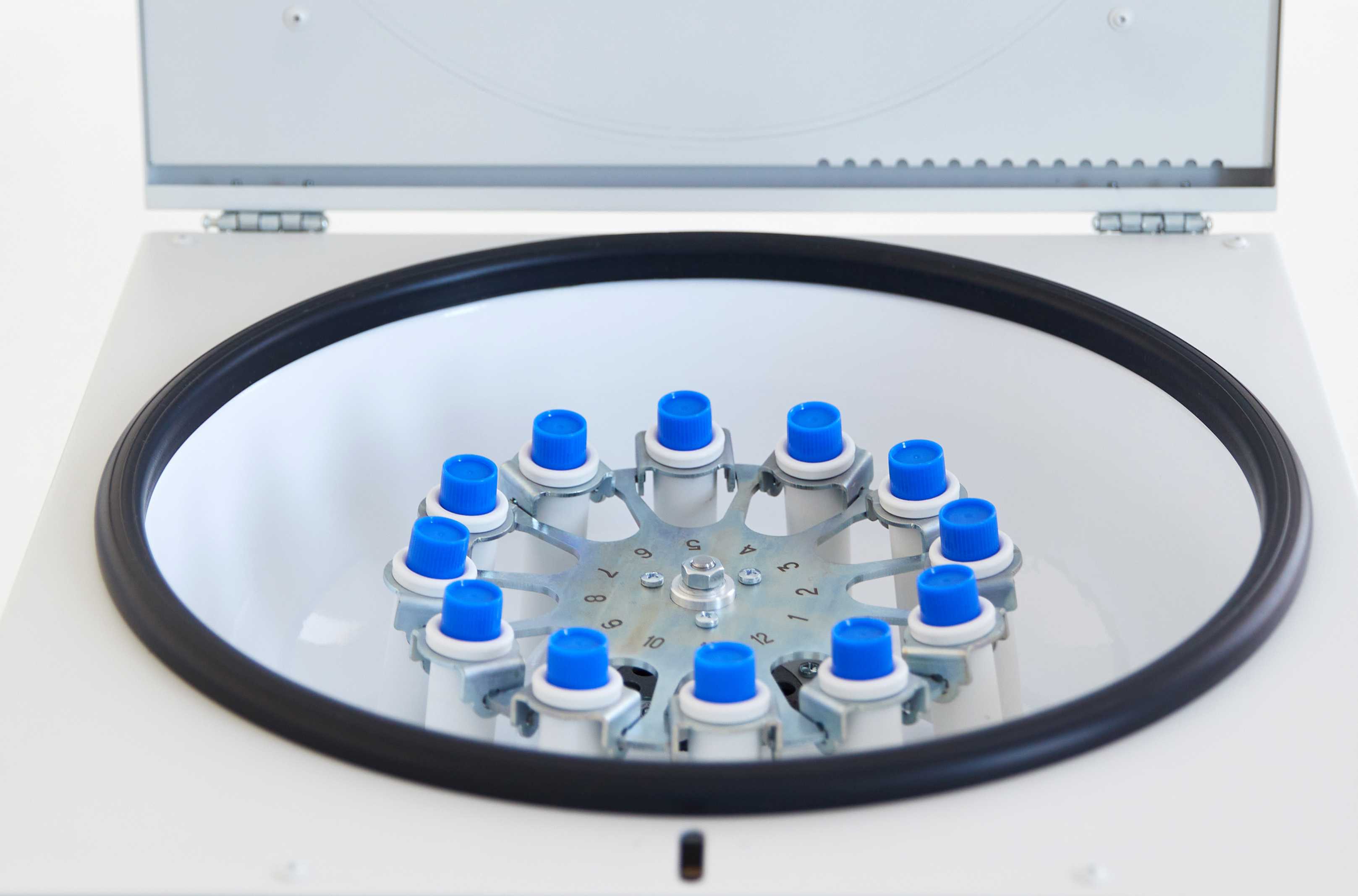
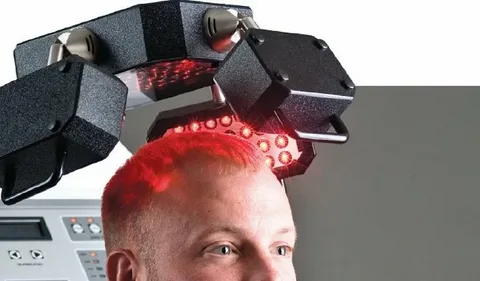
Low-Level Laser Therapy (LLLT) has become an increasingly popular and effective post-hair transplant treatment. It is a non-invasive procedure that uses low-level laser light to stimulate hair follicles, promote healing, and accelerate hair regrowth. Incorporating LLLT after a hair transplant can maximize your results, helping to strengthen transplanted and native hair while ensuring long-term success.
LLLT is a form of light therapy that uses red or near-infrared lasers to target the scalp and hair follicles. The light emitted from the lasers penetrates the skin and stimulates cellular activity, increasing blood flow to the scalp and encouraging hair follicles to remain in the active growth phase (anagen phase).
LLLT is a completely pain-free, non-invasive treatment with no downtime. It is FDA-approved for the treatment of hair loss and is effective for both men and women experiencing thinning hair.
The LLLT Process After a Hair Transplant
Benefits of LLLT After a Hair Transplant
The effectiveness of LLLT increases with consistent use. Here’s how it can be structured for optimal results after a hair transplant:
Conclusion
LLLT is a powerful and effective way to support and enhance your hair transplant results. From promoting faster healing to stimulating stronger, thicker hair growth, LLLT can make a significant difference in the outcome of your procedure. By incorporating LLLT into your post-transplant care routine, you can ensure the longevity of your hair restoration and maintain the health of both transplanted and existing hair.
At RQC Hair Transplant Clinic, we offer advanced LLLT as part of our comprehensive post-hair transplant care. Whether you opt for in-clinic treatments or prefer a take-home laser cap, we are committed to providing personalized solutions to help you achieve optimal hair restoration results.
